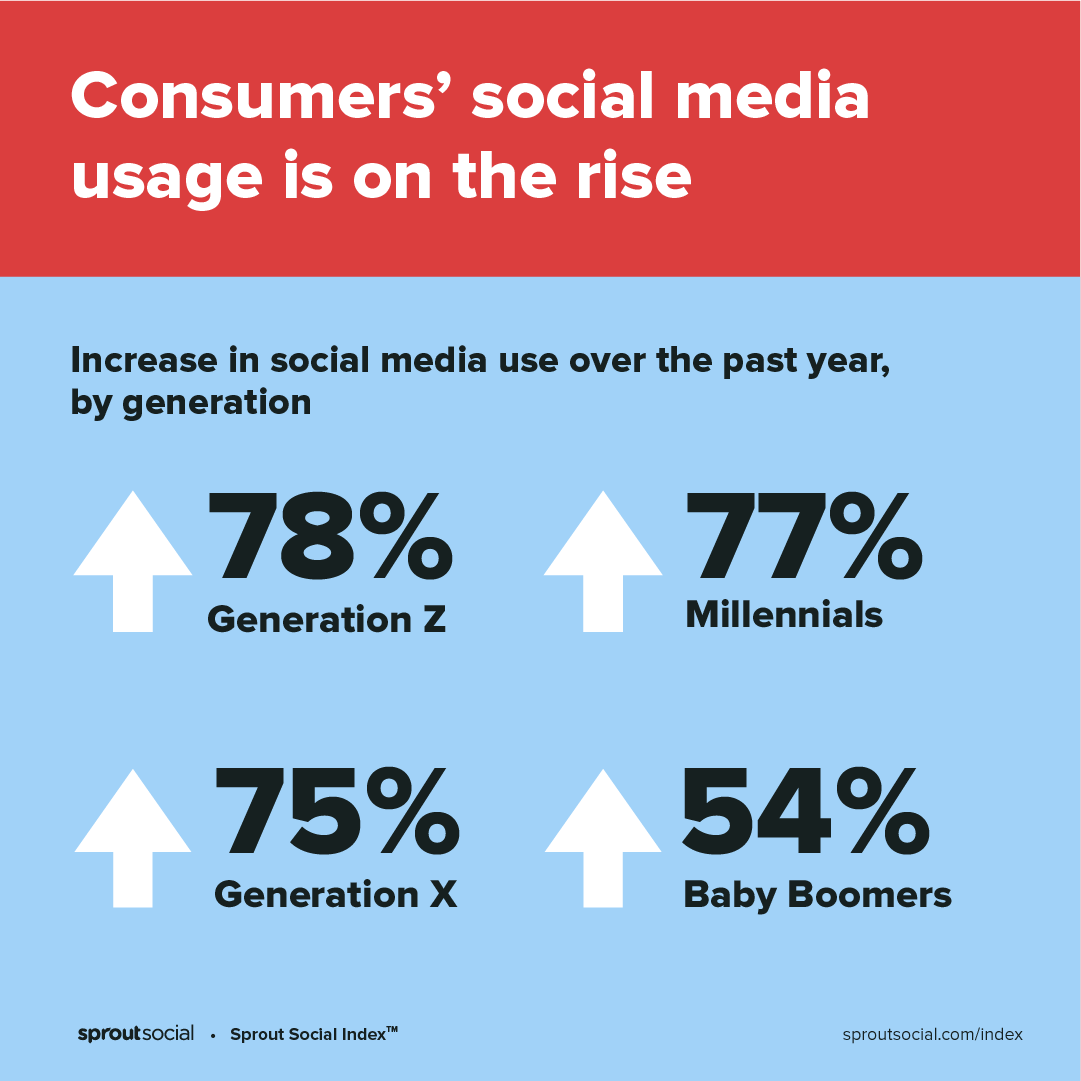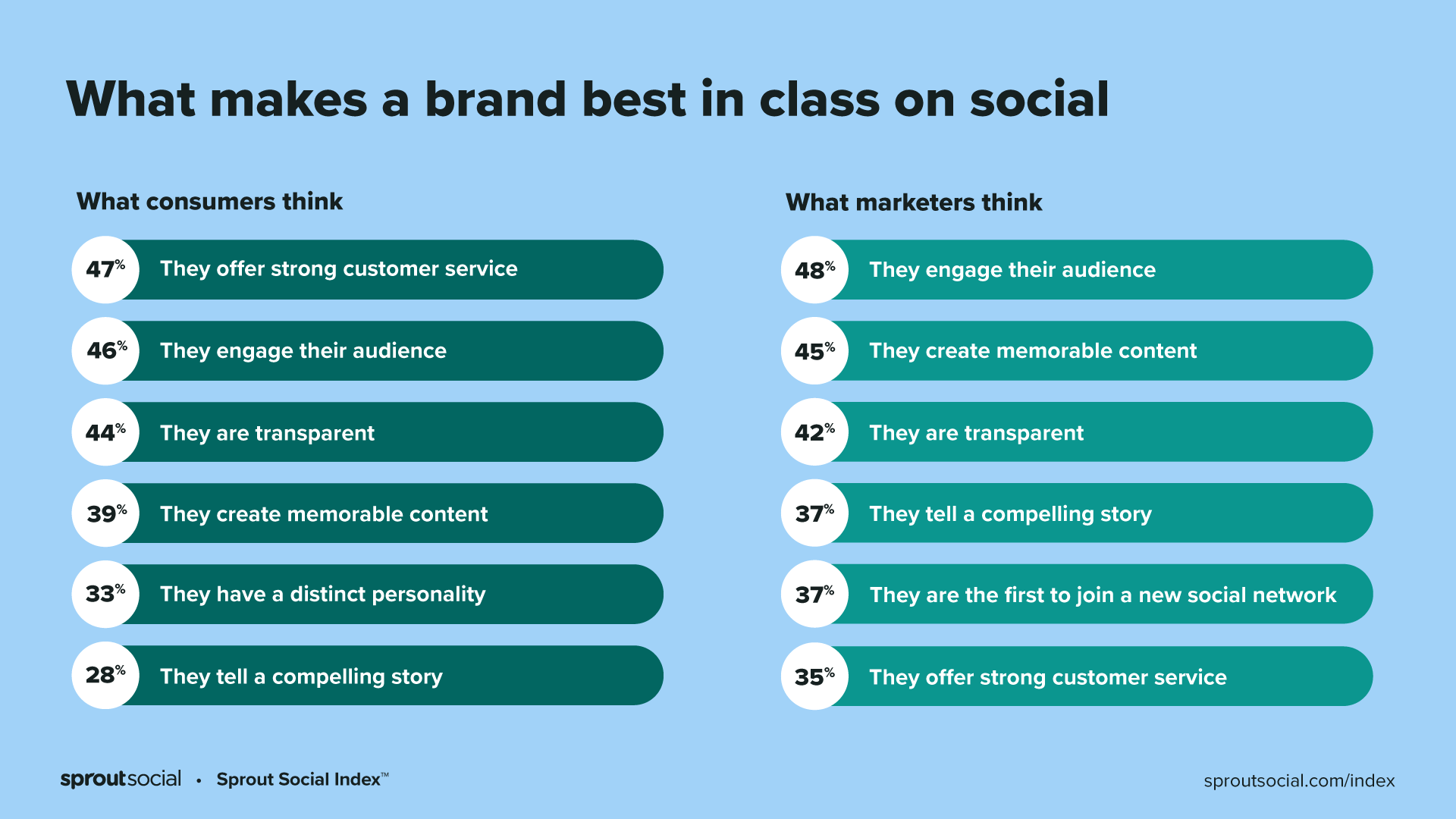What could you do with a larger social media department?
If you said “a lot,” you’re not alone. There is plenty of ground to cover in the ever-expanding world of social. Businesses are finally waking up to the fact that the days of posting the same message across a few platforms are gone. As social becomes the primary communication channel for more brands, the structure of your average social media team will need to change fast.
In the grand scheme of things, the social media profession is relatively new. Leaders who have worked in social since the beginning are now mapping uncharted waters, with critical questions to answer such as: How do I prevent burnout? What career paths can I create for my team? What comes next?
If you’re asking similar questions, it might be time to expand your social team. Keep reading for signs it’s time to grow your department, and advice on how you can build a rock-solid case for a new hire.
3 signs it’s time to expand your social media department
Hiring is a big decision. Recruiting is often a long and expensive process that takes time from multiple parties. That said, the costs of waiting can outweigh the costs of taking the leap. If you’re debating whether it’s time to post that job description, here are some key signs to look for:
1. Growth is stalling
Your output is consistent and you’re maintaining content quality, yet you’ve still stopped seeing growth toward your goal metrics. Growth lulls can stem from a lot of root causes, but if your team is stuck in one you can’t shake, bandwidth may be to blame.
How this helps your case
Social is constantly evolving, and what it takes to meet your goals today might be a fraction of what it will take tomorrow. As consumer social media usage grows exponentially, establishing your brand as a market leader will only become more competitive.

To maintain momentum, marketers will have to spend even more time combing through social data for insights on what’s resonating with customers. If there’s no time, then expanding your social media department is your only path toward ensuring you have resources dedicated to both strategy and execution.
2. You’re missing engagement opportunities
On average, brands receive 129 inbound engagements on social per day. The more people you reach, the more engagement you attract. Responding to every interaction can feel like an uphill battle, but engagement is too important to let fall by the wayside. If you’re unresponsive to your audience, it will be that much harder to build loyalty.
How this helps your case
There are several ways for customers to interact with your brand on social. Aside from the standard Likes and comments, they can leave reviews, share support requests and tag brands in praise (or in worse cases, complaints).

According to the 2021 Sprout Social Index™, consumers say that strong customer service and audience engagement are the two most important factors that make a brand best in class on social. As more consumers take their transactions online, social media responsiveness will continue to play a larger role in overall customer satisfaction.
3. No time for collaboration
Social media is a collaborative profession by nature. Social data can inform marketing, product roadmaps, competitive analyses, sales tactics and more. By the same token, team members beyond marketing can widen your perspective to refine your messaging and content decisions.
How this helps your case
According to 72% of executives surveyed, social data is already the top data source used to inform business decisions, even more so than market research. If your insights live in a marketing silo, your business risks losing sight of consumer interests.
Social can be transformative when managers have the time to share their reporting and collaborate with other leaders across a business.
Questions to guide your growth strategy
Many considerations go into expanding a team. When it comes to social media departments, where career paths are often ambiguous, there are even more questions to answer. New hires change team dynamics, opening paths toward specialization and creating renewed interest in career development.
But growth is not a standard process. Your expansion strategy should tightly align with the current and future needs of your business and industry. For example, the growth trajectory of a social department for an ecommerce brand will look entirely different from a team working in higher education. Where one might be looking for a strategist to plan social commerce initiatives, the other will probably see a larger need for a community manager to connect with current and prospective students.
To find out what roles might make the biggest impact on your business, ask the following questions:
- What is the biggest opportunity you’re currently not taking advantage of? The nagging item on your to-do list. The project you’d love to kick off if only you had the time. The tweaks you know would give your KPIs a boost. As a social media manager, your answer to this question is probably a mile long, so focus on what you believe would make the biggest impact on your brand.
- How would you like to expand your skills? Planning to expand a social media department can jumpstart a renewed interest in your own career progression. Picture where you’d like to see yourself in three to five years. Your answer will help you identify key growth areas, as well as some responsibilities that might make sense to offload onto a new employee.
- Where do you think the future of social is headed? The only constant in social media is change. Platforms, features and trends can take off overnight, meaning social marketers always need to be one step ahead of the curve. If you have big bets on how social will evolve—and how that may impact your brand—be sure to take them into account.
- Where is your business headed? Hire with the future in mind. Product launches, market expansion and new business opportunities all have a hand in the future of your social strategy. As businesses continue to go all-in on social, marketers will find themselves even more involved in the strategic initiatives that drive brands forward, which can result in new or shifting priorities.
Once you’ve answered these questions, ask the rest of your team. That’s not limited to direct reports either. Frequent collaborators (or those you wish you had time to collaborate with) will provide new perspectives that can create a more holistic case for expansion.
Making the case to leadership
Justifying an increase in headcount is always difficult, especially when you’re meeting your goals. Between salaries, benefits and equipment, staffing costs add up fast. To get the green light, marketers must sell a data-informed vision of what your team could accomplish with more hands on deck. Here’s how to get it done:
Don’t let it be a surprise
Making the case to expand your social media department will not be a one-and-done conversation. It’s highly unlikely that you’ll be able to kick off a meeting with an ask of that size only to be met with a resounding yes.
Instead, build your case over time with multiple stakeholders. When speaking with senior leadership, make sure they’re aware of the business impact that’s caused by lack of bandwidth. This will make hiring a natural evolution of an ongoing conversation, rather than an unanticipated request.
Paint a specific vision
Rather than focusing on what your team has been able to achieve thus far, share what you could achieve with an increase in staff. Use your answers to the questions above to share what your team will do with an extra 40 hours of dedicated resources.
This is where your social data comes into play. If you understand how your team’s KPIs ladder up to broader marketing and company goals, then you probably know which drivers help you hit those goals. For example, if you’re trying to increase website traffic, you know what levers you can pull to boost visitors.
Use this top-down approach to justify the headcount increase, so that leaders can better understand the business value a new hire will bring.
Highlight the risks
Due to the “always on” nature of the job, social media professionals are at high risk of burnout. Burnout creates flight risks. Research shows that the cost of replacing an experienced employee can range from half to two times that employee’s annual salary. To put it simply: ignoring the problem can and will cost more in the long run.
Social media managers are the digital bodyguards of your company. They take all the hits for your brand, from the abuse of drive-by trolls to meaningful backlash when your company makes a bad decision.
— ella dawson (@brosandprose) June 16, 2020
If you and your team have been battling an unsustainable workload for a while, give your leadership team some insight into the situation. Walk them through the steps you’ve taken to solve the problem, and explain why hiring is the only viable path toward balance.
Building your dream team
There is no one-size-fits-all social media team structure, but with some vision, strategic planning, and leadership buy-in, you can make it to your dream state. Now that you know how to make your case for expansion, it’s time to design a role that will make an impact.
If you’re in need of inspiration, check out this guide to social media org charts. Inside, you’ll find insights from the social marketing leaders behind Kaplan, Cielo Talent and VMWare, as well as their takes on what future social media org charts will look like.
The post How to build a case for expanding your social media department appeared first on Sprout Social.
